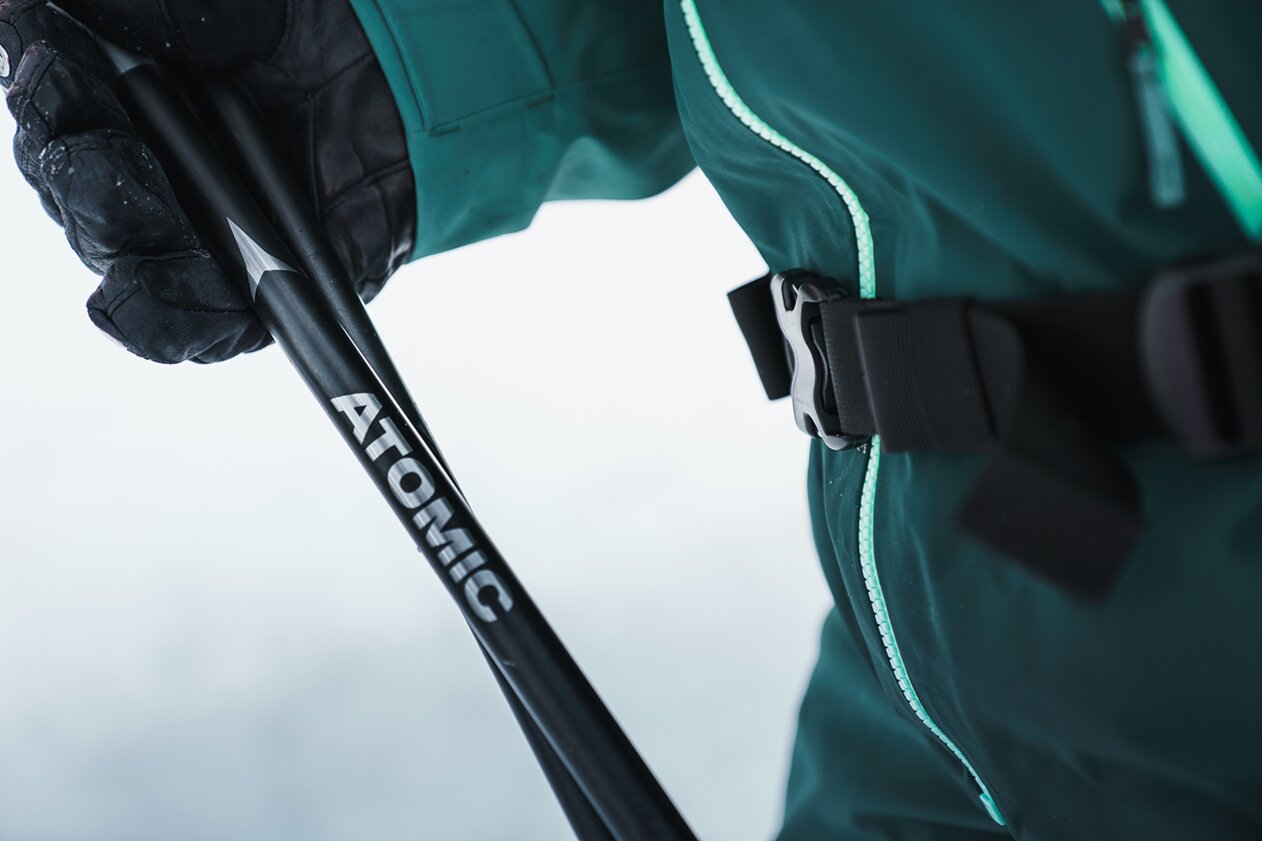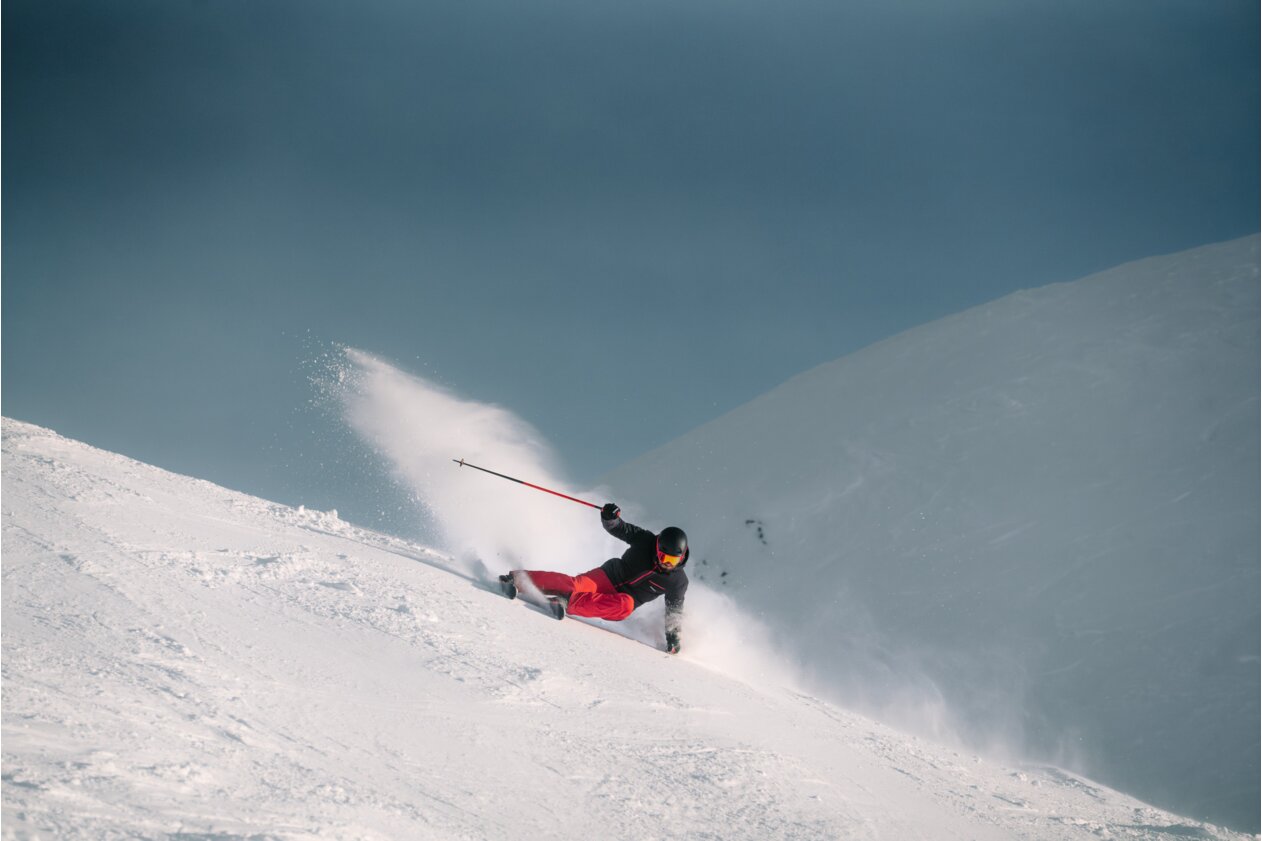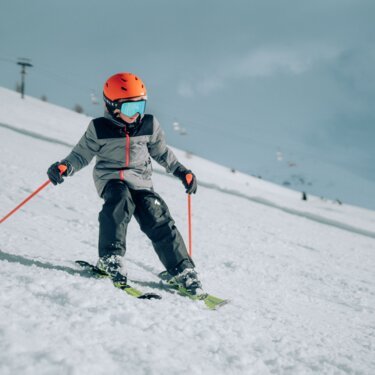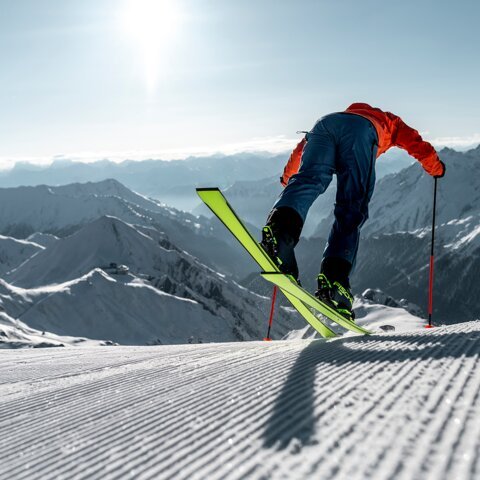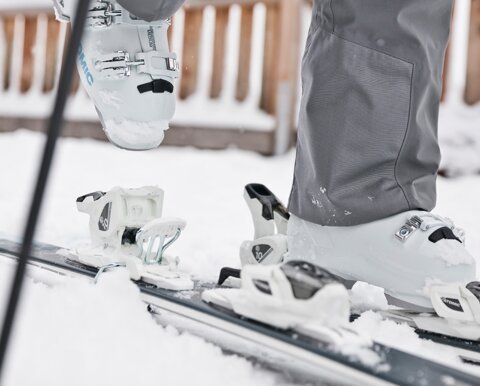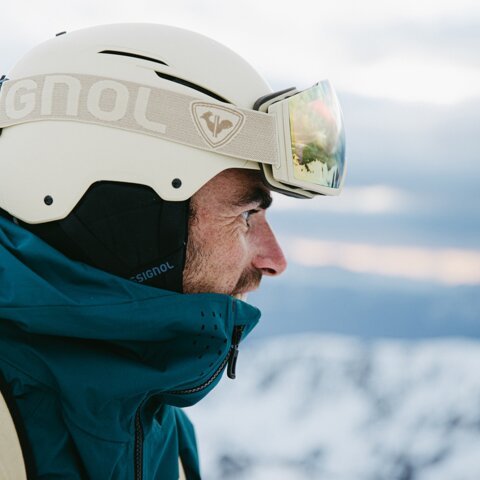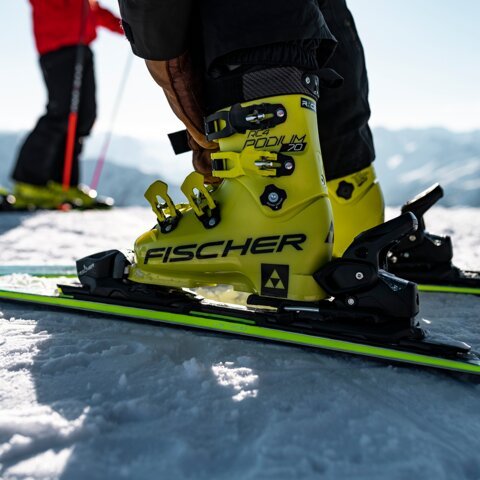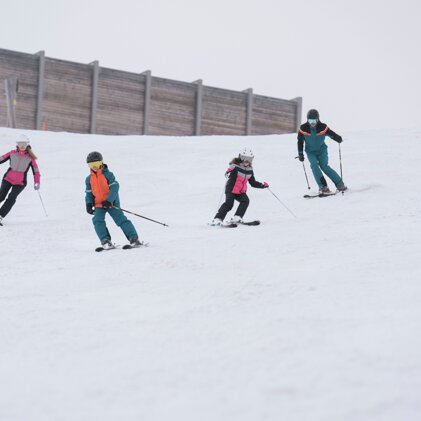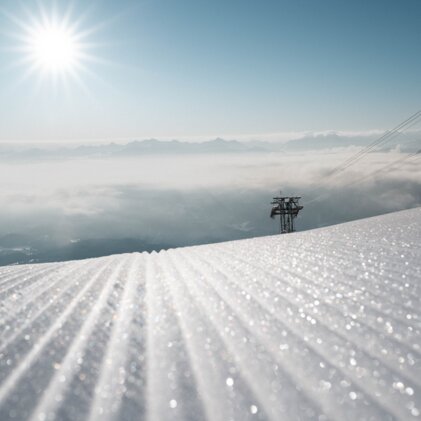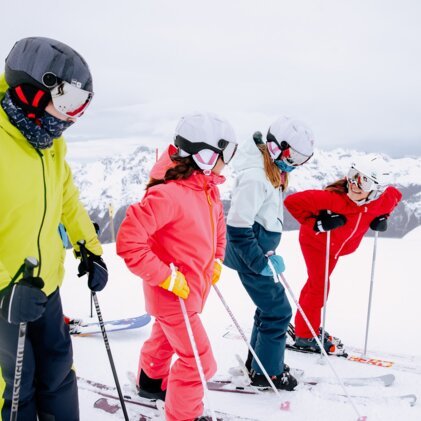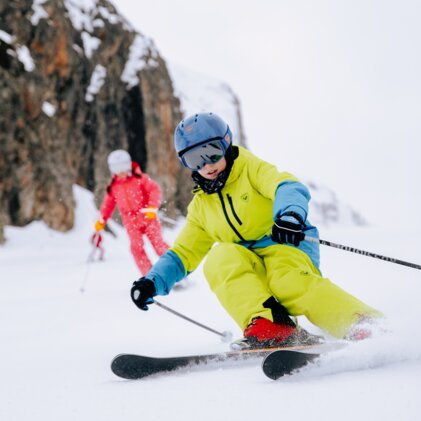Choose the right ski pole length – with INTERSPORT Rent!
When did you last ski without poles? As a skier, you probably know from experience that it's better to ski with poles. They affect your skiing behaviour for many reasons. Among other things, you should pay attention to the right length of poles because they
- support your movements when skiing.
- help you keep your balance on the slopes.
- help you to set the pace when carving or parallel turning.
- are a good turning aid in curves.
- help when pushing, especially on flat slopes.
- provide support when resting.
However, we at INTERSPORT Rent have noticed: Ski poles are often not given the attention they deserve when buying or renting ski equipment. That's why we'll tell you everything you need to know about choosing the right ski poles on this page. Expert tips included!
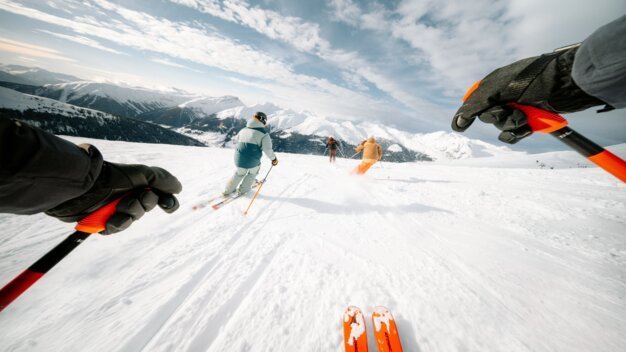
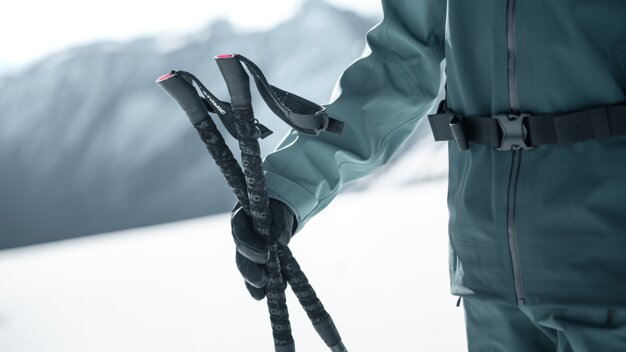
What makes a good ski pole?
Lightness and strength are the two main criteria. The average ski pole weighs between 200 and 300 grams and is around 14 to 18 millimetres in diameter. So which pole is right for you? It all depends on your height, intended use and preferred skiing style.
A ski pole consists of the following parts:
- Grip: The grip of cheaper models is usually made of plastic. Higher quality models are made from a mixture of rubber and foam that feels good and fits securely in the hand. The grip should always be ergonomically designed.
- Strap: The strap is anchored in the handle and prevents the ski poles from getting lost if you let them go. Straps with a plastic buckle for size adjustment are common. The newer clip system is particularly practical and secure. The strap is attached to the glove and is released from the pole when needed or when a lot of force is applied.
- Shaft: Cushioning, stability and low weight. These are the characteristics the shaft of a ski pole should have. Most of the shafts are made of aluminium or carbon.
- Basket: The basket at the lower end of the ski pole prevents the pole from getting too deep into the snow. It is also important when pushing and supporting. There are differences in shape and size: large, star-shaped baskets are ideal for deep snow, while smaller, round baskets are more suitable for groomed slopes.
- Tip: The tip of the ski pole is important for the grip on snow and ice. Common ski poles have steel tips, but there are also models with pole tips made of other materials, such as carbide. In terms of shape, there are crown and hollow tips.
Expert-tip: When choosing your ski poles, pay attention to the ISO 7331 standard. So you can be sure of the quality of your ski poles!
Determine the length of your optimum ski poles
There is no perfect ski pole length. The choice of length is individual and depends on body height, area of use and your individual skiing style.
Ski pole length according to body height
The length of the ski poles should match to the skier’s body height to ensure a natural and ergonomic position during the descent. The following methods will help you to find the optimum size of ski poles based on your height:
1. Rule of thumb for the right length of ski poles
For most skiers, the following formula provides a good guideline for the length of ski poles that will cover most of your needs. This rule can be used to calculate the length of ski poles for children and adults.
Body height in centimetres multiplied by 0.7
Example: For a height of 1.70 metres, this means a pole length of 119 centimetres (170cm x 0,7 = 119). As ski pole length is divided into steps of five-centimetres, the choice in this example would be a 120-centimetre pole.
We recommend: If you are exactly between two sizes, choose the longer pole. Use the result as a guideline! The length of your legs and upper body, your personal preferences and your skiing style will also influence on the choice of the “optimal” ski pole. Our winter sports experts will be happy to advise you at more than 800 locations.
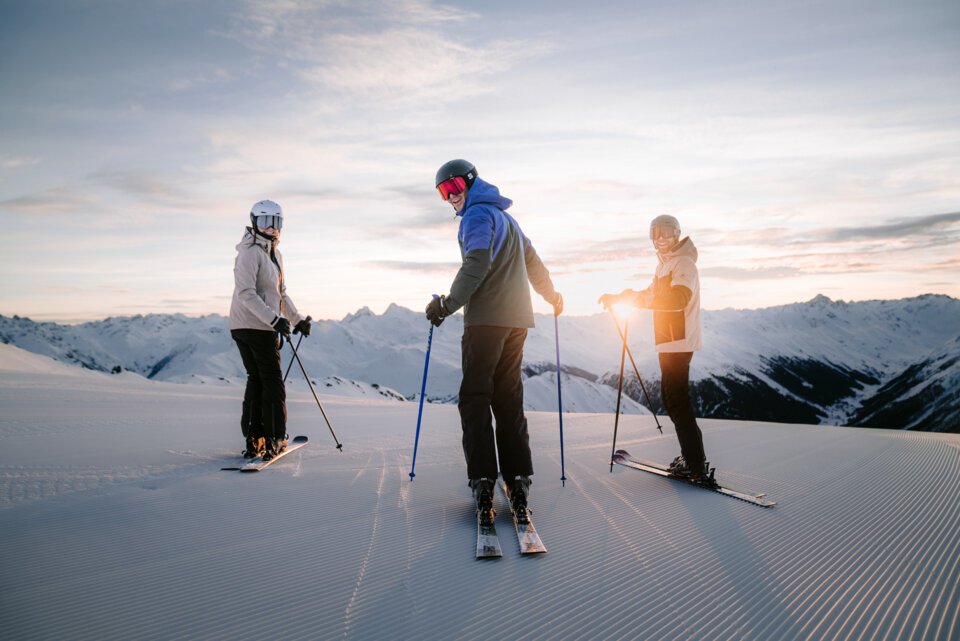
2. The angle method for checking the length in the shop
To check the length of the ski poles in the shop, stand up straight and turn the pole around. Hold it below the basket and touch the tip of the grip to the ground. If your upper arm and forearm are in a ninety-degree angle, the pole should be the right length.
You can use the following table as guidance for choosing the right pole length:
| Height in cm | Ski pole length in cm |
| 105 | 75 |
| 105-115 | 80 |
| 115-125 | 85 |
| 125-135 | 90 |
| 135-145 | 100 |
| 145-155 | 105 |
| 155-160 | 110 |
| 160-170 | 115 |
| 170-175 | 120 |
| 175-185 | 125 |
| 185-190 | 130 |
| 190-195 | 135 |
| ab 196 | 140 |
Please note, that this information is a guide only. Also check the specified pole length using the rule of thumb or angle method and adjust the length to your individual needs if necessary.
Tip: Take advantage of the offer from INTERSPORT Rent and test ski poles in the right length.
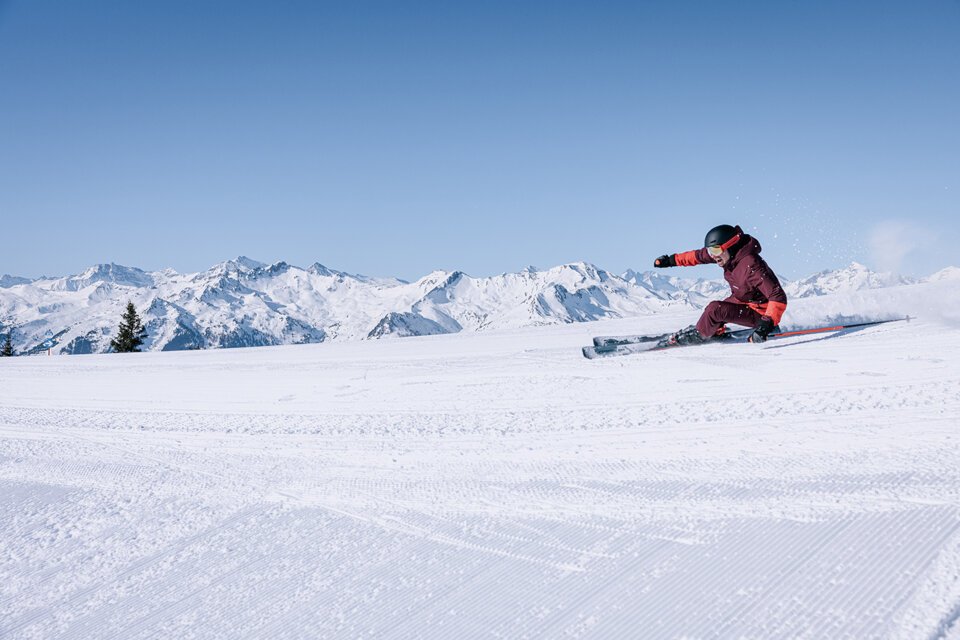
The right ski pole length according to skiing style
You prefer skiing in deep snow, in the fun park, on the race track or on perfectly groomed blue slopes? In any case, you should consider your preferred skiing terrain when choosing the length of your ski poles. Also the material is important for your choice. We have summarized the different characteristics a pole should have for your preferred skiing style:
- Alpine & Slopes: made of carbon (light, but more expensive) or aluminium, small baskets
- Freeride: length-adjustable telescopic poles (also popular with ski tourers) or subtract 5 cm from the pole length calculated above
- Freestyle & Park: very short poles (approx. 1 m), preferably made of strong but flexible aluminium to better hold up the risk of falling
- Racing: longer poles for easy pushing, often with a slight bend in the shaft
- Alternative telescopic poles: adjustable telescopic poles with twist-lock or clamp system, can be quickly and easily adapted to individual conditions and body size. Also practical for touring. When set long, they help you on the ascent and serve as normal ski poles on the descent. For climbing and breaks, they can be stowed away in your backpack.
Which ski pole material offers which advantages?
In addition to the length of the poles, the material also plays an important role in the choice: Light or heavy? Strong or flexible? Aluminium and carbon poles are particularly popular and offer different benefits depending on the length of the pole and the style of skiing.
Aluminium ski poles
Aluminium ski poles are stiff and strong. Although they bend relatively quickly, they can be bent back to their original shape with a little force. Another advantage is that aluminium is cheap to buy and less susceptible to damage or scratches from ski edges etc. Aluminium ski poles are therefore a good choice for 'normal' skiing on groomed slopes, in combination with the right pole length.
Poles made from heat-treated aluminium are even stronger and more flexible. Also look at the serial number on the pole - it tells you the type of aluminium alloy and gives an indication of the quality and strength of the material. This strength information can be found under the handle. The higher the number, the better the quality.
Tip: As a guidance, the number '6' means high quality and high strength.
Carbon ski poles
Carbon ski poles are mainly used by the pros - for good reason: they are very stiff and extremely light. They also have high bending strength and good damping properties - ideal for perfect turns! Another advantage is that carbon does not deform (permanently), which reduces the stress on the wrists when using the poles.
A disadvantage of carbon poles is their relatively high price. Also, the material is easily damaged by sharp objects.
You want to try out the different materials for yourself? Visit one of our over 800 stores. Our winter sports experts at INTERSPORT Rent will be happy to show you our selection of top brands and help you choose the perfect pole length!
Du möchtest gerne die unteschiedlichen Materialien von Skistöcken ausprobieren? Besuche uns an einem von über 800 Standorten. Unsere Wintersportexperten bei INTERSPORT Rent zeigen dir gerne unsere Auswahl an Top-Marken und unterstützen dich bei der Wahl der perfekten Skistocklänge!
Take the test!
Still not sure which pole length and material is the best for you? Test different models from top brands at INTERSPORT Rent! We offer free personal advice from experienced ski experts and you'll also find everything else you need for skiing in our shops.
FAQs to ski poles
What ski pole length for children?
The pole length for children should be around 70 % of their height. Multiplying the height in centimetres by 0.7 gives a guide to the correct pole length. Alternatively, you can test: The elbow should form a 90 degree angle when the pole is held vertically. For more information on children's ski poles, see our RENTertainer blog.
Can ski poles be straightened?
Yes, aluminium poles can usually be carefully bent back into shape. However, this is not possible with carbon poles as the material can break under heavy loads.
Why are there bent poles?
Curved poles are used in racing because their aerodynamic shape reduces drag and allows for higher speeds.
Why do you ski with poles?
Poles are better for skiing because they affect your skiing for several reasons. They help you keep your balance, provide stability and make it easier to push off. They are also useful for turning and maintaining speed on the slopes.

